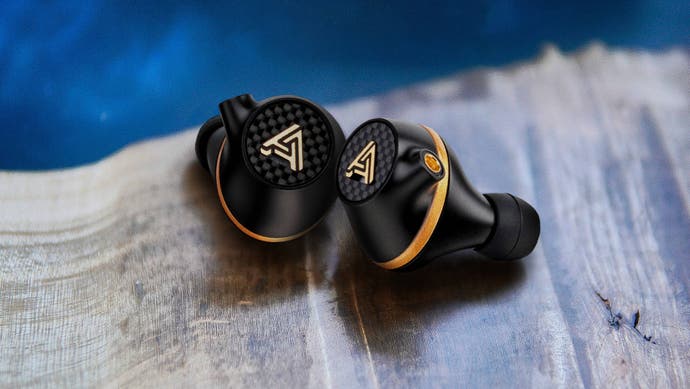Audeze Euclid review: planar magnetic in-ears tested for gaming and more
These audiophile-grade IEMs cost more than many PCs.
Audeze's Euclid in-ear planar magnetic headphones are extraordinary. And at $1299/£1099, they'd better be. These are intended to be god-tier audiophile-grade in-ears for music and the like, but this is Digital Foundry - so we've focused on their gaming performance in our testing regime. Is it ever worth spending so much on in-ears for this purpose - and are there any cheaper alternatives worth considering?
We'll provide that information soon, but let's start at the beginning: who is Audeze anyway? This Californian firm isn't a mainstream gaming brand like your Corsairs or Razers, but the company has earned a reputation for great-sounding planar magnetic headphones and gaming headsets that justify their premium price points. Indeed, we've named Audeze's Penrose and LCD-GX as some of the very best in their categories. The Penrose, Penrose X and HyperX-branded Cloud Orbit S are full-fat gaming headsets, supporting modern consoles and PC, while the LCD-GX is an ultra-premium audiophile headset that could also be used for gaming - a descriptor that's closer to the nature of the Euclid in-ears.
However, even trying these headsets didn't quite prepare me for the Euclid - it's one thing to plunk a comfortably massive over-ear headset on and get great sound, but quite another to shrink the same tech down to a size that'll fit in your ears.
Quite how this is possible without making serious sacrifices I'm not sure, but the engineering here is impressive to say the least. The relatively modest in-ears contain an 18mm planar magnetic transducer, with magnets and waveguide, an impressive feat of miniaturisation that doesn't seem to sacrifice much in the way of audio quality. Of course, as this is a closed-back in-ear design, you won't get quite the soundstage or immersion factor of open-back and/or on-ear headphones, but you get at least some measure of that sound stage, accuracy and bass response that distinguishes planar magnetic headphones from dynamic headphones.
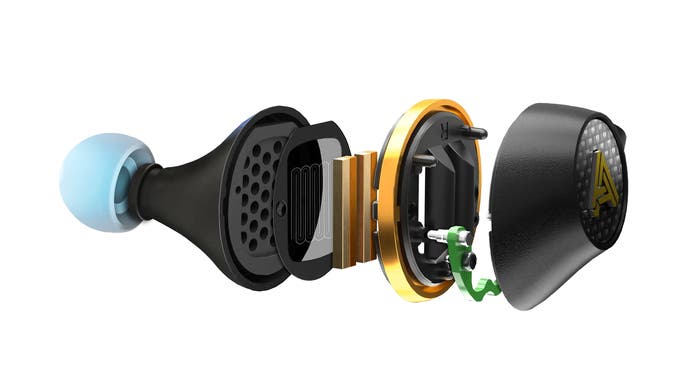
The Euclid in-ears are supremely comfortable in use, with plenty of tips in various materials - including silicone and foam - and sizes ensuring you'll find a combination that matches the geography of your pinnae and ear canals. I found that my left ear was a slightly different size to my right, but happily this was easily catered for.
To connect these in-ears to your PC, console or other device, you get a choice of detachable MMCX cables that terminate in 3.5mm unbalanced or 4.4mm balanced plugs. I chose to plug the 3.5mm end into a Sound Blaster X1 USB DAC/AMP, which was more than sufficient for driving the 12-ohm in-ears to comfortable volumes but probably ranks towards the low end of DAC/AMPs you'd want to use with the Euclid - after all, I'm sure that using something like a high-end tube amp would produce even more spectacular results. However, with this level of impedence, you shouldn't worry about using them with integrated sound cards, laptops or smartphones if the need arises.
Interestingly, the Euclid can also be used wirelessly, although I'm not convinced that this should be the primary use case for a pair of in-ears at this price range. This is achieved via a cable with an integrated Bluetooth receiver, but even with AptX HD support the in-ears don't have quite the same sound signature when you're using them wirelessly. Battery life is reasonable at eight hours, but requires Micro USB charging - not ideal in 2023 but something you can work around.
The Euclid come in a nice Pelican-style clear plastic case, with room for the in-ears and its accessories - although the Bluetooth adapter requires a bit of folding to fit within. This is definitely overkill compared to the tiny cases we're used to for AirPods-style in-ears, but I guess for headphones that cost significantly more you would want extra protection. My fear is that the box is so bulky as to be eschewed entirely, so the inclusion of a smaller hard case rather than the simple soft fabric bag would make sense here too.
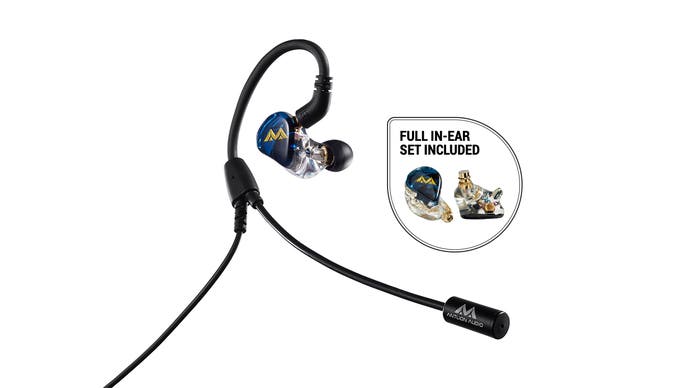
So are these IEMs worth the cost? For 99 percent of people, absolutely not - you can get the Antlion Kimura Duo, a dynamic IEM that offers a similar sound profile and an included microphone for £165, and use that extra £1000 for something you need more - like an entire gaming PC? A month of gas and electricity (if you're lucky)?
If money is no object though, then the Euclid is worth considering. These in-ears kick out the jams better than anything in this category I've ever used, with incredible technical accuracy and superior low-end performance, and it's not even close. I will let more experienced audiophiles than me speak to the exact nature of their quality, but suffice it to say that these in-ears sound great; listening to music with them is a transformative experience, whether straight out of the box or after some careful EQ tweaking to bring out the top-end quality, and the same technical characteristics also make game audio and soundtracks shine.
So: what is it like using high-end in-ear headphones like the Euclid for gaming and work? To find out, I used them as my go-to headset for Zoom meetings, competitive Counter-Strike matches and a more relaxed playthough of Fire Emblem Engage.
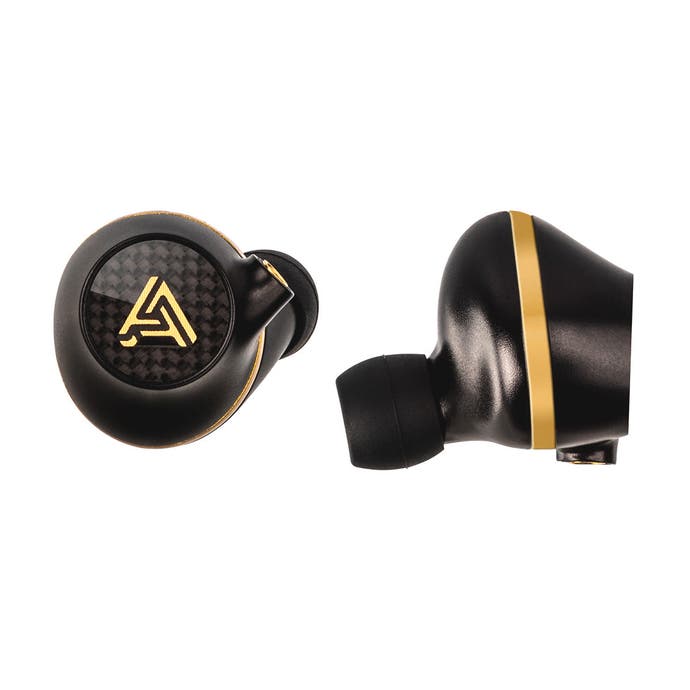
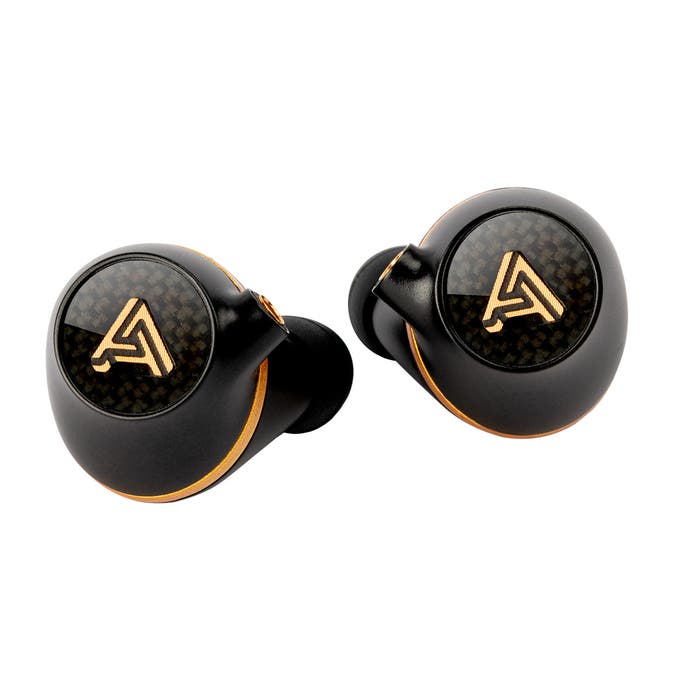
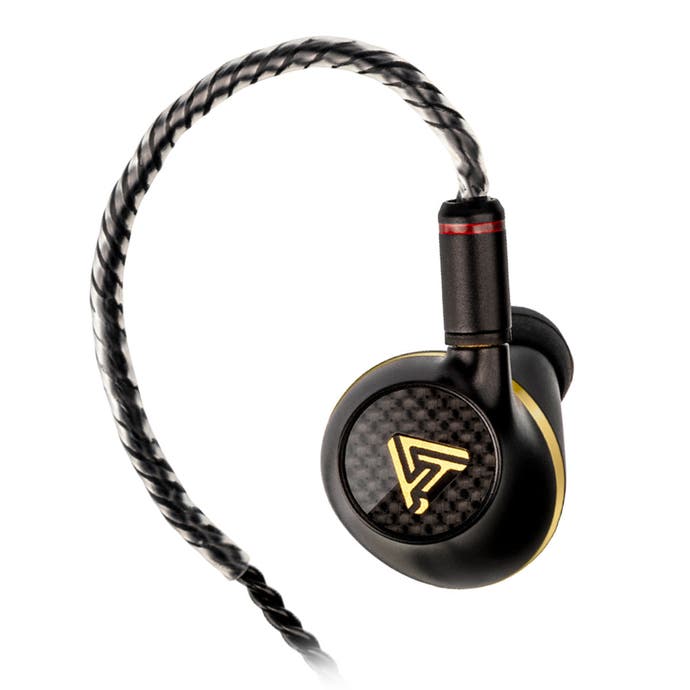
The first thing that stands out to me from my notes is the difficulty of getting these IEMs in and out of your ear. Even though the fit is quite natural, I had to really get the hang of placing each side into my ear, rotating it into place and looping the cable above my ear. This meant I spent the first 30 seconds of Zoom meetings - or Counter-Strike matches - fumbling with the IEMs, an awkward feeling for all involved. It's much more of a song and dance than an over-ear headset, more than in-ear wireless headphones, and introducing Bluetooth the equation slows things down further.
However, once the Euclid were actually in position, I found them surprisingly comfortable, blocking out background noise with ease and allowing me to really focus on what I was doing. This was great for being productive, or hearing subtle sounds in competitive games, but not brilliant for listening out for the postman knocking on the door. It was only after several hours of use that my ears became a little sore, but this is par for the course for me when it comes to in-ears - about four hours is my limit, I think.
For gaming, the Euclid work well thanks to their relatively neutral, non-fatiguing sound signature and extremely well-developed low end. I found that they worked better for single-player titles where I was immersed in what was going on, rather than in competitive shooters where I didn't have time to appreciate them as much, but in both scenarios you still benefit from the ability to pick up plenty of detail, whether that's individual instruments in a soundtrack or flanking enemies. Of course, a headhone that was set up to emphasise treble in a more prominent (and less natural) way would likely be better from a competitive perspective; something like the Fnatic React is a good example of this.

So if you're considering the Euclid, I'd suggest starting with a much cheaper IEM first - the Antlion Audio Kimura Duo I mentioned earlier is nearly £1000 cheaper at ~£150 and delivers a very similar experience in terms of usability if not out-and-out audio quality, with the helpful addition of an attached microphone if you need it. That makes it a significantly better value option, especially for gaming, but if you want something that pushes the audiophile envelope in a similar form factor, the Euclid are spectacular.
I just hope that we see more of Audeze's planar magnetic tech in more mainstream in-ear headphones - something at £300 or so could just about serve as a great alternative to high-end over-ear headphones for those that prefer immersion to a wider soundstage. In the here and now though, the Euclid at least serve as an impressive high water mark when it comes to in-ear audio quality, even if they're way too expensive to recommend.
